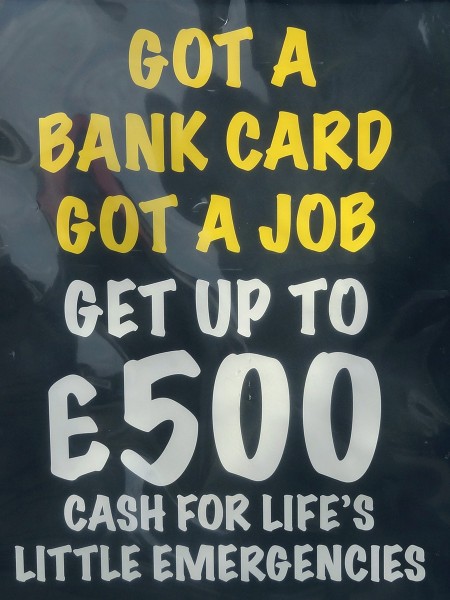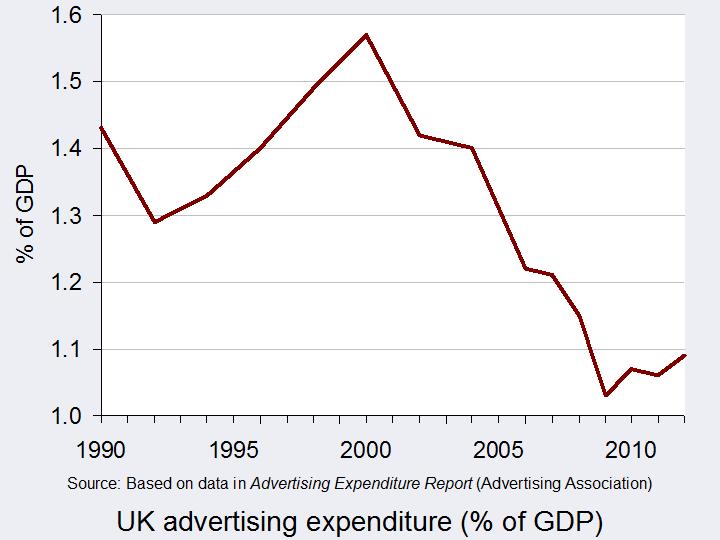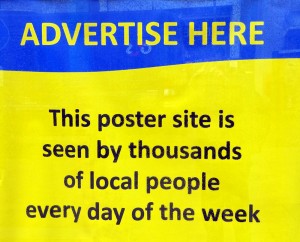 I am an avid tennis fan and have spent many nights and in the last 10 days had many early mornings (3am), where I have been glued to the television, watching in particular Rafael Nadal in the Australian Open. Tennis is one of the biggest sports worldwide and generates huge amounts of revenue through ticket sales, clothing and other accessories, sponsorship, television rights and many other avenues. When I came across the BBC article linked below, I thought it would make an excellent blog!
I am an avid tennis fan and have spent many nights and in the last 10 days had many early mornings (3am), where I have been glued to the television, watching in particular Rafael Nadal in the Australian Open. Tennis is one of the biggest sports worldwide and generates huge amounts of revenue through ticket sales, clothing and other accessories, sponsorship, television rights and many other avenues. When I came across the BBC article linked below, I thought it would make an excellent blog!
There are many aspects of tennis (and of every other sport) that can be analysed from a Business and Economics stance. With the cost of living having increased faster than wages, real disposable income for many households is at an all-time low. Furthermore, we have so many choices today in terms of what we do – the entertainment industry has never been so diverse. This means that every form of entertainment, be it sport, music, cinema, books or computer games, is in competition. And then within each of these categories, there’s further competition: do you go to the football or the tennis? Do you save up for one big event and go to nothing else, or watch the big event on TV and instead go to several other smaller events? Tennis is therefore competing in a highly competitive sporting market and a wider entertainment market. The ATP Executive Chairman and President said:
We’ve all got to understand the demands on people’s discretionary income are huge, they are being pulled in loads of different avenues – entertainment options of film, music, sport – so we just need to make sure that our market share remains and hopefully grows as well.
As we know from economic analysis, product differentiation and advertising are key and tennis is currently in a particularly great era when it comes to drawing in the fans, with four global superstars.
However, tennis and all sports are about more than just bringing in the fans to the live events. Sponsorship deals are highly lucrative for players and, in this case, for the ATP and WTA tennis tours. It is lucrative sponsorship deals which create prize money worth fighting for, which help to draw in the best players and this, in turn, helps to draw in the fans and the TV companies.
 With technological development, all sports are accessible by wider audiences and tennis is making the most of the fast growth in digital media. Looking at the packaging of tour events and how best to generate revenues through TV rights is a key part of strategic development for the ATP. It goes a long way to showing how even one of the world’s most successful sporting tours is always looking at ways to innovate and adapt to changing economic and social times. Tennis is certainly a sport that has exploited all the opportunities it has had and, through successful advertising, well-organised events and fantastic players, it has created a formidable product, which can compete with any other entertainment product out there. As evidence, the following fact was observed in the Telegraph article:
With technological development, all sports are accessible by wider audiences and tennis is making the most of the fast growth in digital media. Looking at the packaging of tour events and how best to generate revenues through TV rights is a key part of strategic development for the ATP. It goes a long way to showing how even one of the world’s most successful sporting tours is always looking at ways to innovate and adapt to changing economic and social times. Tennis is certainly a sport that has exploited all the opportunities it has had and, through successful advertising, well-organised events and fantastic players, it has created a formidable product, which can compete with any other entertainment product out there. As evidence, the following fact was observed in the Telegraph article:
A 1400 megawatt spike – equivalent to 550,000 kettles being boiled – was recorded at around 9.20pm on that day [6/7/08] as Nadal lifted the trophy. The surge is seen as an indicator of millions viewing the final and then rushing to the kitchen after it is over. The national grid felt a bigger surge after the Nadal victory even than at half time during the same year’s Champions League final between Manchester United and Chelsea.
Tennis top guns driving ATP revenues BBC News, Bill Wilson (20/1/14)
The top 20 sporting moments of the noughties: The 2008 Wimbledon Final The Telegraph, Mark Hodgkinson (14/12/09)
 The global tennis industry in numbers BBC News (22/1/14)
The global tennis industry in numbers BBC News (22/1/14)
Questions
- How does tennis generate its revenue?
- In which market structure would you place the sport of tennis?
- What are the key features of the ATP tour which have allowed it to become so successful? Can other sports benefit from exploiting similar things?
- How has technological development created more opportunities for tennis to generate increased revenues?
- Can game theory be applied to tennis and, if so, in what ways?
- Why does sponsorship of the ATP tour play such an important role in the business of tennis?
- How important is (a) product differentiation and (b) advertising in sport?
 When people take out loans they typically do so to spend and with the UK economy in its current state, many would argue that this is a good thing. The ‘payday loan’ industry took advantage of the weak economy and the squeezed households in the UK and for the past few years, we have seen constant adverts that will appeal to many households. But, is the industry as competitive as the adverts would have us believe?
When people take out loans they typically do so to spend and with the UK economy in its current state, many would argue that this is a good thing. The ‘payday loan’ industry took advantage of the weak economy and the squeezed households in the UK and for the past few years, we have seen constant adverts that will appeal to many households. But, is the industry as competitive as the adverts would have us believe?
An inquiry into this industry has been on-going for some time, and it has now been referred to the Competition Commission, due to ‘deep-rooted problems with the way competition works’. For some, a payday loan is a short term form of finance, but for others it has become a way of living that has led to a debt spiral. Frank McKillop, policy manager at Abcul said:
There is a clear demand for instant credit and across the country we are increasingly seeing members who have debts with multiple payday lenders and a record of rolling over debts, or going to one payday lender to clear the debt to another.
One problem identified by the OFT is that customers have found it difficult to compare costs and this has led, in some cases, to customers paying back significantly more than they originally thought. Customers being unable to repay loans will ring warning bells for many people, with no-one wanting a return to the height of the credit crunch.
 The OFT has criticized payday loan companies for competing not on costs, but on the speed of approval and using certain unapproved tactics as part of their advertising. The selling point of such companies is that you can have the money in a very short time period. However, the criticism is that this leads to loans being given to those who are unable to afford them. Key credit checks are not being done and with late night texts being sent to often financially vulnerable people, it is no wonder that complaints have been received. In a statement, the OFT said:
The OFT has criticized payday loan companies for competing not on costs, but on the speed of approval and using certain unapproved tactics as part of their advertising. The selling point of such companies is that you can have the money in a very short time period. However, the criticism is that this leads to loans being given to those who are unable to afford them. Key credit checks are not being done and with late night texts being sent to often financially vulnerable people, it is no wonder that complaints have been received. In a statement, the OFT said:
The competitive pressure to approve loans quickly may give firms an incentive to skimp on the affordability assessment which is designed to prevent irresponsible lending and protect consumers.
[the business models of companies were] predicated on making loans which are unaffordable, leading to borrowers paying far more than expected through rollovers, additional interest and other charges.
While payday loans are legal and there are many companies offering them, it is what they are competing over, which seems to be in question. The industry itself has begun to change its practices, providing more information to customers, only allowing loans to be rolled over three times and the potential to freeze repayments if the customer gets into financial difficulty. If more stringent checks are completed and hence timing does not become the only grounds for competition, then the problems above may become less significant. With the ongoing OFT inquiry into the practices of the payday loan industry and the continuing demand for such financing, it is likely that we will see much more of both the good and the bad that it has to offer. The following articles consider the investigation.
Webcasts
 Balls warns against payday loans ‘blank cheque’ BBC News (27/6/13)
Balls warns against payday loans ‘blank cheque’ BBC News (27/6/13)
 Payday lender investigation could be delayed by bureaucracy Telegraph, Steve Hawkes (27/6/13)
Payday lender investigation could be delayed by bureaucracy Telegraph, Steve Hawkes (27/6/13)
 Payday lenders to face ‘tougher restrictions’ on advertising BBC News, Simon Gompertz (1/7/13)
Payday lenders to face ‘tougher restrictions’ on advertising BBC News, Simon Gompertz (1/7/13)
 Payday lending rates BBC News, Julio Martino and Stella Creasy (2/7/13)
Payday lending rates BBC News, Julio Martino and Stella Creasy (2/7/13)
Articles
Regulator to investigate payday loan industry Financial Times, Elaine Moore and Robert Cookson (27/6/13)
Q&A: Payday loans BBC News (31/5/13)
Payday loans: reining in an industry that is a law unto itself Guardian (27/6/13)
Payday loans industry to face competition inquiry BBC News (27/6/13)
Payday loans firms face competition inquiry Sky News (27/6/13)
Payday loans market faces competition inquiry Guardian, Hilary Osborne (27/6/13)
OFT refers payday loans to Competition Commission Scotsman, Jane Bradley (27/6/13)
Five reasons why we all need to worry about payday lenders Telegraph, Emma Simon (27/6/13)
OFT documents
Payday lending compliance review Office of Fair Trading (27/6/13)
Questions
- Into which market structure would you place the payday loans industry? Make sure you justify your answer.
- What is the role of the (a) the OFT and (b) the Competition Commission? Do these authorities overlap?
- What part does advertising play in this industry?
- To what extent is the payday loan industry a possible cause of another credit crunch?
- Why has the OFT referred this industry to the Competition Commission?
- To what extent are payday loans an essential part of an economy?
 How important are emotions when you go shopping? Many people go shopping when they ‘need’ to buy something, whether it be a new outfit, food/drink, a new DVD release, a gift, etc. Others, of course, simply go window shopping, often with no intention of buying. However, everyone at some point has made a so-called ‘impulse’ purchase.
How important are emotions when you go shopping? Many people go shopping when they ‘need’ to buy something, whether it be a new outfit, food/drink, a new DVD release, a gift, etc. Others, of course, simply go window shopping, often with no intention of buying. However, everyone at some point has made a so-called ‘impulse’ purchase.
There is only one article below, which is from the BBC and draws on data released from the National Employment Savings Trust’s survey. This report suggests that British people spend over £1 billion every year on impulse buys – purchases that are not needed, were not intended and are often regretted once the ‘high’ has worn off. Often, it is the way in which a product is advertised or positioned that leads to a spontaneous purchase – seeing chocolate bars/sweets at the tills; a product offered at a huge discount advertised in the window of a shop; 2 for 1 purchases; points for loyalty etc. All of these and more are simple techniques used by retailers to encourage the impulse buy. As consumer psychologist, Dr. James Intriligator says:
Retailers have clever ways of manipulating customers to spend more but if you stick to your plans you can avoid being affected by their tactics.

In other cases, it’s simply the frame of mind of the consumer that can lead to such purchases, such as being hungry when you’re food shopping or having an event to attend the next day and deciding to go window shopping, despite already having something to wear! Dr. Intriligator continues, saying:
Your ability to resist and make rational choices is diminished when your glucose levels are down … When you get irrational, you fall back on trusted brands, which often leads you to spend more money … Later in the shop, you’re more tired and less likely to resist [impulse buys]
But are such purchases irrational? One of the key assumptions made by economists (at least in traditional economics) is that consumers are rational. This implies that consumers weigh up marginal costs and benefits when making a decision, such as deciding whether or not to purchase a product. But, do impulse buys move away from this rational consumer approach? Is buying something because it makes you happy in the short term a rational decision? Behavioural economics is a relatively new ‘branch’ of economics that takes a closer look at the decisions of consumers and what’s behind their behaviour. The following article from the BBC considers the impulse buy and leaves you to consider the question of irrational consumers.
Article
How to stop buying on impulse BBC Consumer (30/5/13)
Questions
- If the marginal benefit of purchasing a television outweighs the marginal cost, what is the rational response?
- Using the concept of marginal cost and benefit, illustrate them on a diagram and explain how equilibrium should be reached.
- What is behavioural economics?
- What are the key factors that can be used to explain impulse buys?
- How can framing help to explain irrational purchases?
- If a product is advertised at a significant discount, what figure for elasticity is it likely to have to encourage further purchases in-store?
- Is bulk-buying always a bad thing?
 Adverts are increasingly diverse, ranging from families using various products and promoting their qualities, to a gorilla drumming, a horse dancing and a monkey drinking tea! But, how important is advertising to a product’s brand. Does it have a positive effect on sales and profitability?
Adverts are increasingly diverse, ranging from families using various products and promoting their qualities, to a gorilla drumming, a horse dancing and a monkey drinking tea! But, how important is advertising to a product’s brand. Does it have a positive effect on sales and profitability?
The key role of advertising is to sell more products and many firms spend a huge amount on advertising campaigns. Indeed, over £16bn was spent on advertising in 2012. Given that the economy is still vulnerable and many firms have seen their sales and profits decline, this is a huge amount. Procter & Gamble spent over £200 million, British Sky Broadcasting spent £145 million and Tesco spent £114 million in 2011.
 Advertising increases consumer awareness of the product and its features, but also actively aims to persuade people to purchase the product. By differentiating the product through adverts a company aims to shift the demand curve to the right and also make it more inelastic, by persuading customers that there are no (or few) close substitutes.
Advertising increases consumer awareness of the product and its features, but also actively aims to persuade people to purchase the product. By differentiating the product through adverts a company aims to shift the demand curve to the right and also make it more inelastic, by persuading customers that there are no (or few) close substitutes.
 Since the start of the economic downturn in 2008, advertising expenditure has fallen, as companies have seen a decline in their budgets. From a high of £18.61 billion in 2004, the Advertising Association found that it fell to £14.20 billion in 2009 at constant 2008 prices. In the last few years, advertising expenditure has remained at around £14.5 billion. But, is cutting back on advertising a sensible strategy during a recession? Of course budgets are tight for both firms and consumers, but many suggest that media-savvy firms would actually benefit from maintaining their advertising. By doing so firms could take advantage of weaker competitors by increasing their market share and establishing their brand image in the long run.
Since the start of the economic downturn in 2008, advertising expenditure has fallen, as companies have seen a decline in their budgets. From a high of £18.61 billion in 2004, the Advertising Association found that it fell to £14.20 billion in 2009 at constant 2008 prices. In the last few years, advertising expenditure has remained at around £14.5 billion. But, is cutting back on advertising a sensible strategy during a recession? Of course budgets are tight for both firms and consumers, but many suggest that media-savvy firms would actually benefit from maintaining their advertising. By doing so firms could take advantage of weaker competitors by increasing their market share and establishing their brand image in the long run.
 It’s also important to consider another link between economic growth and advertising. Research suggests that advertising can be an important factor for economic growth. A three-year study undertaken by the Advertising Association and Deloitte, commencing in January 2013 suggests that for every £1 spent on advertising in the UK, £6 is generated for the wider economy. Based on these predictions, the estimated £16bn that was spent on ad campaigns in 2011 added over £100 billion to the UK’s GDP.
It’s also important to consider another link between economic growth and advertising. Research suggests that advertising can be an important factor for economic growth. A three-year study undertaken by the Advertising Association and Deloitte, commencing in January 2013 suggests that for every £1 spent on advertising in the UK, £6 is generated for the wider economy. Based on these predictions, the estimated £16bn that was spent on ad campaigns in 2011 added over £100 billion to the UK’s GDP.
 So, perhaps encouraging more advertising is the answer to the UK’s economic dilemma. This is certainly the opinion of Matt Barwell, the consumer marketing and innovation director of Diageo Western Europe, who said:
So, perhaps encouraging more advertising is the answer to the UK’s economic dilemma. This is certainly the opinion of Matt Barwell, the consumer marketing and innovation director of Diageo Western Europe, who said:
People fundamentally believe in advertising but a lot of the conversation focuses on negative elements. People rarely get the opportunity to talk about the positive role advertising plays in terms of wealth creation, exports and the social benefits that it provides. These are all things that many of us take for granted.
If private firms can therefore be encouraged to boost their marketing campaigns, jobs may be created, demand for products will rise and with the help of the multiplier, the economy may strengthen. Advertising has both pros and cons and opinions differ on what makes a good advert. But, whatever your opinion of the role of advertising, it is certainly an important aspect of any economy. The following articles take a view of advertising.
Articles
Could we advertise ourselves out of recession? Marketing Week, Lucy Tesseras (31/1/13)
Advertising in times of recession: A question of value The Open University, Tom Farrell (13/3/09)
Recession spending on advertising and R&D Penn State, Smeal College of Business
Nothing to shout about The Economist (30/7/09)
UK’s payday lenders face restrictions on advertising Reuters (6/3/13)
Value claims improve advertising effectiveness in recessionary times Com Score, Diane Wilson (17/9/13)
Advertising in a bad economy About Advertising, Apryl Duncan
Advertising worth £100bn to UK economy The Telegraph, Graham Ruddick (31/1/13)
Can advertising be the motor that gets the struggling UK economy out of first gear? More about advertising (26/2/13)
Adverts ‘worth £100bn to UK’ Independent, Giddeon Spanier (30/1/13)
Report
Advertising Pays – How advertising fuels the UK economy Advertising Association & Deloitte (30/1/13)
 Advertising Pays – How advertising fuels the UK economy: Accompanying video presentation Advertising Association & Deloitte: on YouTube (30/1/13)
Advertising Pays – How advertising fuels the UK economy: Accompanying video presentation Advertising Association & Deloitte: on YouTube (30/1/13)
Questions
- What is the role of advertising?
- Using a demand and supply diagram, illustrate and explain the role of advertising.
- During a recession, why would you expect advertising expenditure to fall? What impact would you expect this to have in your diagram from question 1?
- How might firms that sustain their advertising expenditure during a downturn benefit?
- Explain the link between advertising and the economy.
- Why could a higher level of advertising boost economic growth?
- Are there any negative externalities from advertising?
 After weak Christmas trading, Tesco issued a profit warning – its first in 20 years. Following this, their shares fell in value by some £5bn, but this was met with an announcement of the creation of 20,000 jobs in the coming years, as part of a project to train staff, improve existing stores and open new ones. Yet, Tesco has reported another quarter of falling sales.
After weak Christmas trading, Tesco issued a profit warning – its first in 20 years. Following this, their shares fell in value by some £5bn, but this was met with an announcement of the creation of 20,000 jobs in the coming years, as part of a project to train staff, improve existing stores and open new ones. Yet, Tesco has reported another quarter of falling sales.
Trading times have been challenging and the fact that the UK’s biggest supermarket is struggling is only further evidence to support this. In the 13 weeks to the 26th May 2012, Tesco reported a decline in like-for-like sales of 1.5%. Although much of the £1bn investment in Tesco is yet to be spent, the fact that sales have fallen for a full year must be of concern, not only to its Chief Executive, but also to analysts considering the economic future for the UK.
Consumer confidence remains low and together with tight budgets, shoppers are continuing to be very cautious of any unnecessary spending. Part of Tesco’s recent drive to drum up sales has been better customer service and a continuing promotion war with the other supermarkets. This particular sector is highly competitive and money-off coupons and other such promotions plays a huge part in the competitive process. Whilst low prices are obviously crucial, this is one sector where non-price competition can be just as important.
Although Tesco sales in the UK have been nothing to shout about – the Chief Executive said their sales performance was ‘steady’ – its total global sales did increase by 2.2%. The Chief Executive, Mr Clarke said:
‘Internationally, like-for-like sales growth proved resilient, despite slowing economic growth in China…Against the backdrop of continued uncertainty in the eurozone, it is pleasing to see that our businesses have largely sustained their performance.’
A boost for UK sales did come with the Jubilee weekend and with the Olympics just round the corner, Tesco will be hoping for a stronger end to the year than their beginning. The following articles consider Tesco’s sales and the relative performance of the rest of the sector.
Tesco’s quarterly sales hit by ‘challenging’ trading BBC News (11/6/12)
Tesco UK arm notches up one year of falling sales Guardian, Zoe Wood (11/6/12)
Tesco upbeat despite new sales dip Independent, Peter Cripps (11/6/12)
Tesco sales seen lower in first quarter Reuters, James Davey(11/6/12)
The Week Ahead: Tesco set to admit it is losing ground to rivals Independent, Toby Green (11/6/12)
Tesco’s performance in the UK forecast to slip again Telegraph, Harry Wallop (10/6/12)
Tesco: What the analysts say Retail Week, Alex Lawson (11/6/12)
Supermarkets issue trading updates The Press Association (9/6/12)
The Week Ahead: Supermarkets prepare to give City food for thought Scotsman, Martin Flanagan (11/6/12)
Asda’s sales growth accelerates Reuters, James Davey (17/5/12)
Asda sales increase helped by Tesco Telegraph, Harry Wallop (18/5/12)
Tesco v. Sainsbury’s in trading update battle Manchester Evening News (11/6/12)
Sainsbury’s out-trades Tesco on UK food sales Independent, James Thompson (10/6/12)
Questions
- Using some examples, explain what is meant by non-price competition.
- Why has Tesco been losing ground to its competitors?
- Given the products that Tesco sells (largely necessities), why have sales been falling, despite household’s tight budgets?
- Into which market structure would you place the supermarket sector? Explain your answer by considering each of the assumptions behind the market structure you choose.
- Why have Tesco’s rivals been gaining ground on Tesco?
- How might this latest sales data affect Tesco’s share prices?
- Based on what the analysts are saying about the food sector, can we deduce anything about the future of the UK economy in the coming months?
 I am an avid tennis fan and have spent many nights and in the last 10 days had many early mornings (3am), where I have been glued to the television, watching in particular Rafael Nadal in the Australian Open. Tennis is one of the biggest sports worldwide and generates huge amounts of revenue through ticket sales, clothing and other accessories, sponsorship, television rights and many other avenues. When I came across the BBC article linked below, I thought it would make an excellent blog!
I am an avid tennis fan and have spent many nights and in the last 10 days had many early mornings (3am), where I have been glued to the television, watching in particular Rafael Nadal in the Australian Open. Tennis is one of the biggest sports worldwide and generates huge amounts of revenue through ticket sales, clothing and other accessories, sponsorship, television rights and many other avenues. When I came across the BBC article linked below, I thought it would make an excellent blog! With technological development, all sports are accessible by wider audiences and tennis is making the most of the fast growth in digital media. Looking at the packaging of tour events and how best to generate revenues through TV rights is a key part of strategic development for the ATP. It goes a long way to showing how even one of the world’s most successful sporting tours is always looking at ways to innovate and adapt to changing economic and social times. Tennis is certainly a sport that has exploited all the opportunities it has had and, through successful advertising, well-organised events and fantastic players, it has created a formidable product, which can compete with any other entertainment product out there. As evidence, the following fact was observed in the Telegraph article:
With technological development, all sports are accessible by wider audiences and tennis is making the most of the fast growth in digital media. Looking at the packaging of tour events and how best to generate revenues through TV rights is a key part of strategic development for the ATP. It goes a long way to showing how even one of the world’s most successful sporting tours is always looking at ways to innovate and adapt to changing economic and social times. Tennis is certainly a sport that has exploited all the opportunities it has had and, through successful advertising, well-organised events and fantastic players, it has created a formidable product, which can compete with any other entertainment product out there. As evidence, the following fact was observed in the Telegraph article: The global tennis industry in numbers BBC News (22/1/14)
The global tennis industry in numbers BBC News (22/1/14)








